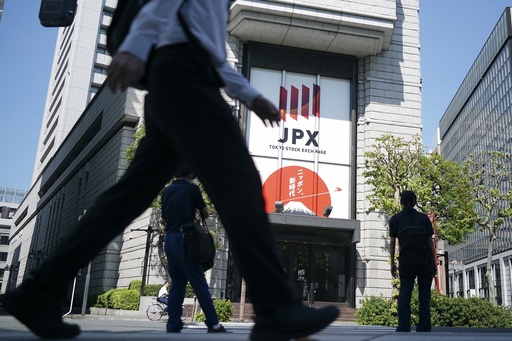
Asian stock markets saw a downward trend on Thursday as investors faced uncertainty related to the upcoming U.S. presidential election on November 5.
The Nikkei 225 index in Japan experienced a decrease of 0.5%, settling at 39,069.20. Meanwhile, Australia’s S&P/ASX 200 dropped by 0.3% to 8,153.20. On the other hand, Hong Kong’s Hang Seng index showed a minor gain of 0.3%, reaching 20,433.83, while China’s Shanghai Composite fell by 0.3% to 3,258.04.
South Korea’s Kospi index lost 1.2%, landing at 2,562.07. This decline came after the South Korean government disclosed that North Korea conducted a test launch of what is suspected to be a new long-range missile aimed at reaching the continental United States.
Although specific details regarding the capabilities of the missile tested were not transparent, it appeared the launch was intended to draw attention from the U.S. ahead of its elections next week.
Market participants are also closely monitoring a forthcoming policy decision from the Bank of Japan, although analysts predict that the central bank will maintain its current stance.
The anticipation of earnings reports from various companies across Asia and globally has further added to the cautious sentiment. On Wall Street, the S&P 500 index decreased by 0.3% to 5,813.67 after fluctuating between minor gains and losses throughout the trading day, yet it remained near its previous all-time high achieved earlier this month.
The Dow Jones Industrial Average fell 0.2% to 42,141.54, while the Nasdaq composite declined by 0.6% to 18,607.93, both adjusting from their respective records set the previous day.
A noteworthy highlight, Alphabet’s stock surged by 2.8% after the company exceeded profit forecasts for the last quarter, driven by strong performance from its Google segment. This achievement marks another triumph for the influential group of stocks referred to as the “Magnificent Seven,” which continues to meet or surpass growth expectations.
Conversely, semiconductor firms, which have thrived amid the artificial intelligence boom, saw mixed results. Advanced Micro Devices weighed down the sector after reporting profits that merely met forecasts, causing a ripple effect across stocks in the industry. Among the bigger names, chip giant Nvidia’s stock fell by 1.4%, contributing significantly to the S&P 500’s decline.
Another substantial decliner was Eli Lilly, whose shares tumbled 6.3% amid worries regarding the company’s popular products, Mounjaro for diabetes, and Zepbound for weight loss.
Additionally, Trump Media & Technology Group, the entity behind the former president’s Truth Social platform, experienced a steep drop of 22.3%—its largest loss since going public in March. The stock, known for its volatility, had seen a remarkable surge recently, spiking from around $12 to $40 over the last month.
In the bond market, yields inched upward following the latest economic data from the U.S. The preliminary government estimate revealed a slowdown in overall economic growth during the summer months, although the figures slightly surpassed economic predictions.
A report released Wednesday indicated that hiring among private sector employers accelerated in October, contradicting forecasts of a slowdown, thereby potentially enhancing optimism for Friday’s comprehensive jobs report from the U.S. government.
It is anticipated that the ongoing economic slowdown comes as no surprise after the Federal Reserve increased interest rates significantly to manage inflation. The pressing question now is whether the Fed can stave off a recession while beginning to reduce interest rates to sustain a healthy job market.
Traders widely expect a possible cut to the federal funds rate by 0.25 percentage points during the Fed’s next meeting scheduled for next week, as indicated by the data from CME Group.
The yield on the 10-year Treasury note rose slightly to 4.28%, up from 4.26% at the end of Tuesday, marking a significant increase from 3.60% in mid-September.
In energy markets, benchmark U.S. crude oil increased by 21 cents to reach $68.82 per barrel, while Brent crude rose by 33 cents to $72.88 per barrel.
As for currency exchanges, the U.S. dollar gained slightly against the Japanese yen, rising to 153.48 from the previous 153.31, while the euro dipped marginally to $1.0853 from $1.0858.
